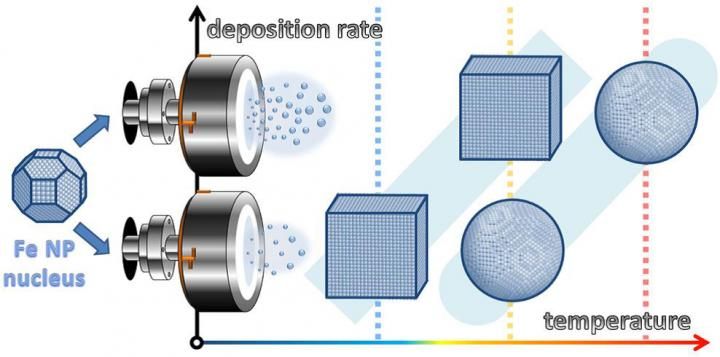Patterning oxide nanopillars at the atomic scale by phase transformation
Advertisement
Researchers at Tohoku University's Advanced Institute for Materials Research (AIMR) have carried out a collaborative study aimed at precisely controlling phase transformations with high spatial precision, which represents a significant step forward in realizing new functionalities in confined dimensions.

Atomic zip in SrNbO3.4. (a) HAADF STEM image taken before irradiation. The irradiation area is marked by a red open rectangle. (b) HAADF STEM image taken after the electron irradiation for
Nano Letters
The team, led by Prof. Yuichi Ikuhara, applied the focused electron beam of a scanning transmission electron microscope (STEM) to irradiate SrNbO3.4 crystals, and demonstrated a precise control of a phase transformation from layered SrNbO3.4 to perovskite SrNbO3 at the atomic scale. Such a precise control of phase transformations opens up new avenues for materials design and processing, as well as advanced nanodevice fabrication.
Background
Phase transformations in crystalline materials are of primary fundamental interest and practical significance in a wide range of fields, including materials science, information storage and geological science. To date, it remains highly desirable to precisely tailor the phase transformations in a material due to their potential impact on macroscopic properties and thus many advanced applications.
Despite decades of efforts, precisely controlling phase transformations at the atomic scale still poses a significant challenge due to the intricacies of governing thermodynamic conditions with atomic precision. Recent technical advances in aberration-corrected STEM offer fertile new ground for probing samples by a focused sub-Angström electron beam, opening an avenue for precisely triggering phase transformations.
Breakthrough
This work has demonstrated a successful control of a phase transformation from the layered SrNbO3.4 to the perovskite SrNbO3 with atomic precision by manipulating a focused sub-Angström electron beam to any selectable region.
Such a concept - of a precise control of phase transformations with an atomic spatial precision - should be, in principle, applicable not only to SrNbO3.4/SrNbO3 but also to other materials, finding applications in material processing and nanodevice fabrication.
Original publication
Other news from the department science
Most read news
More news from our other portals
See the theme worlds for related content
Topic World Chromatography
Chromatography enables us to separate, identify and thus understand complex substances. Whether in the food industry, pharmaceutical research or environmental analysis - chromatography opens up a treasure trove of information about the composition and quality of our samples. Discover the fascinating world of chromatography!

Topic World Chromatography
Chromatography enables us to separate, identify and thus understand complex substances. Whether in the food industry, pharmaceutical research or environmental analysis - chromatography opens up a treasure trove of information about the composition and quality of our samples. Discover the fascinating world of chromatography!

































































